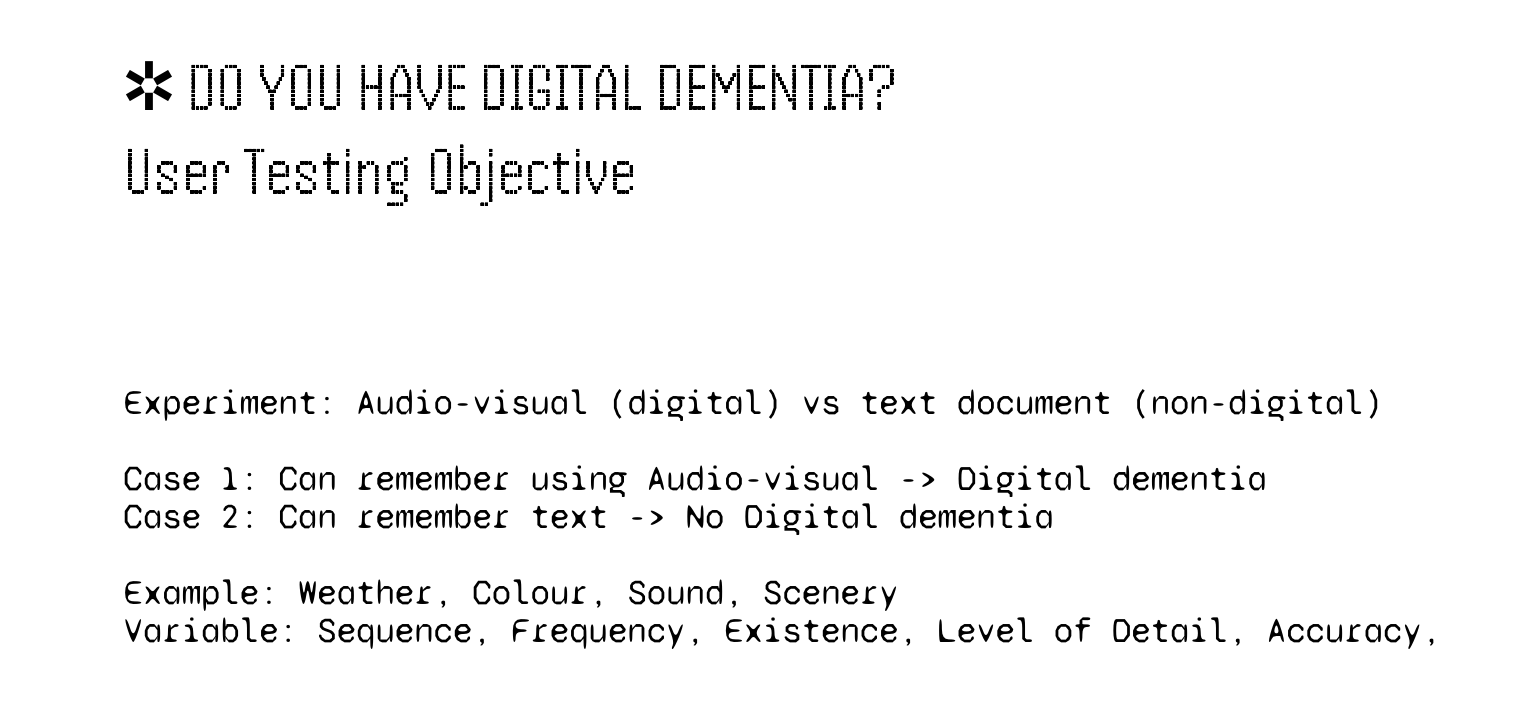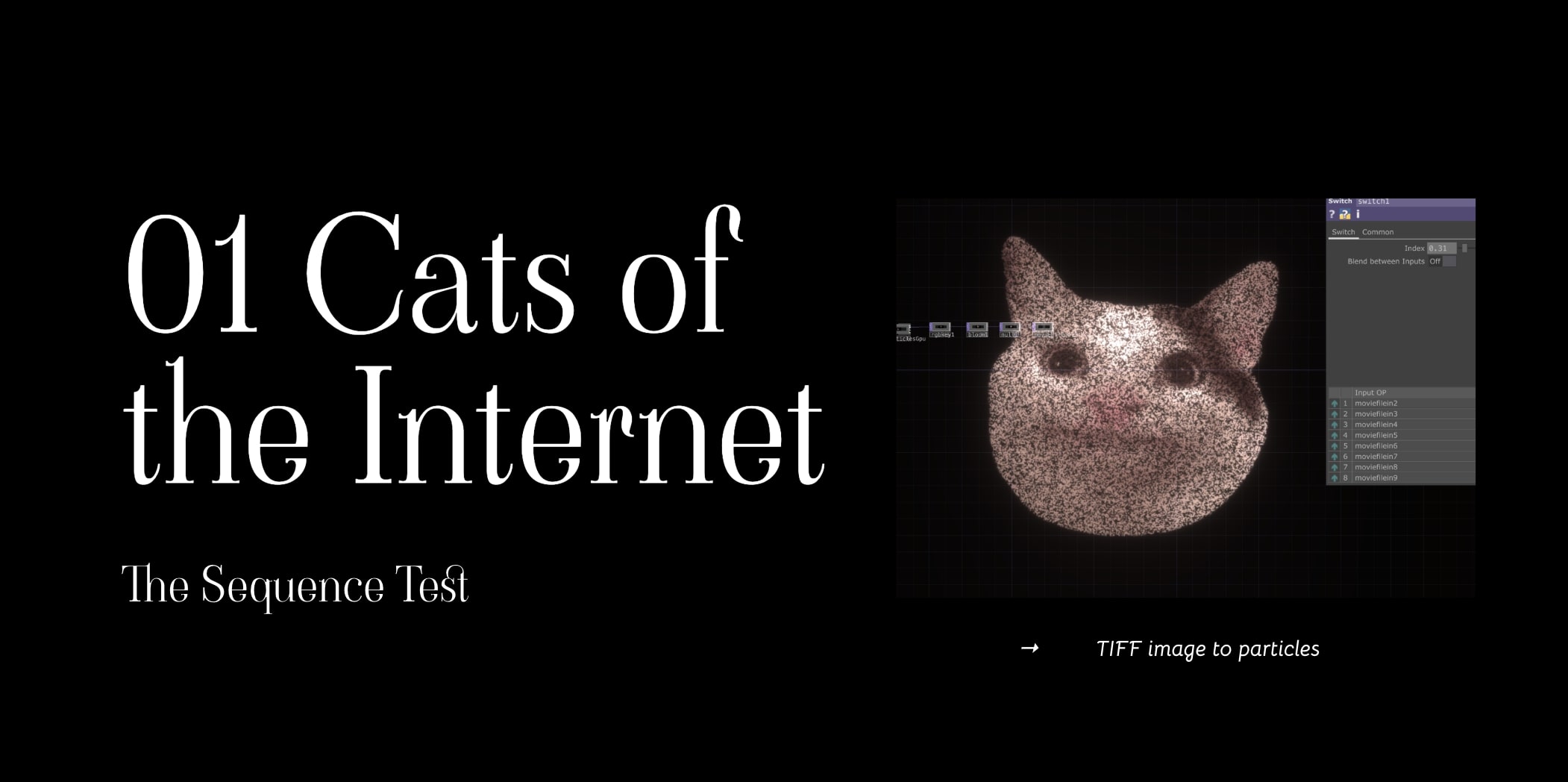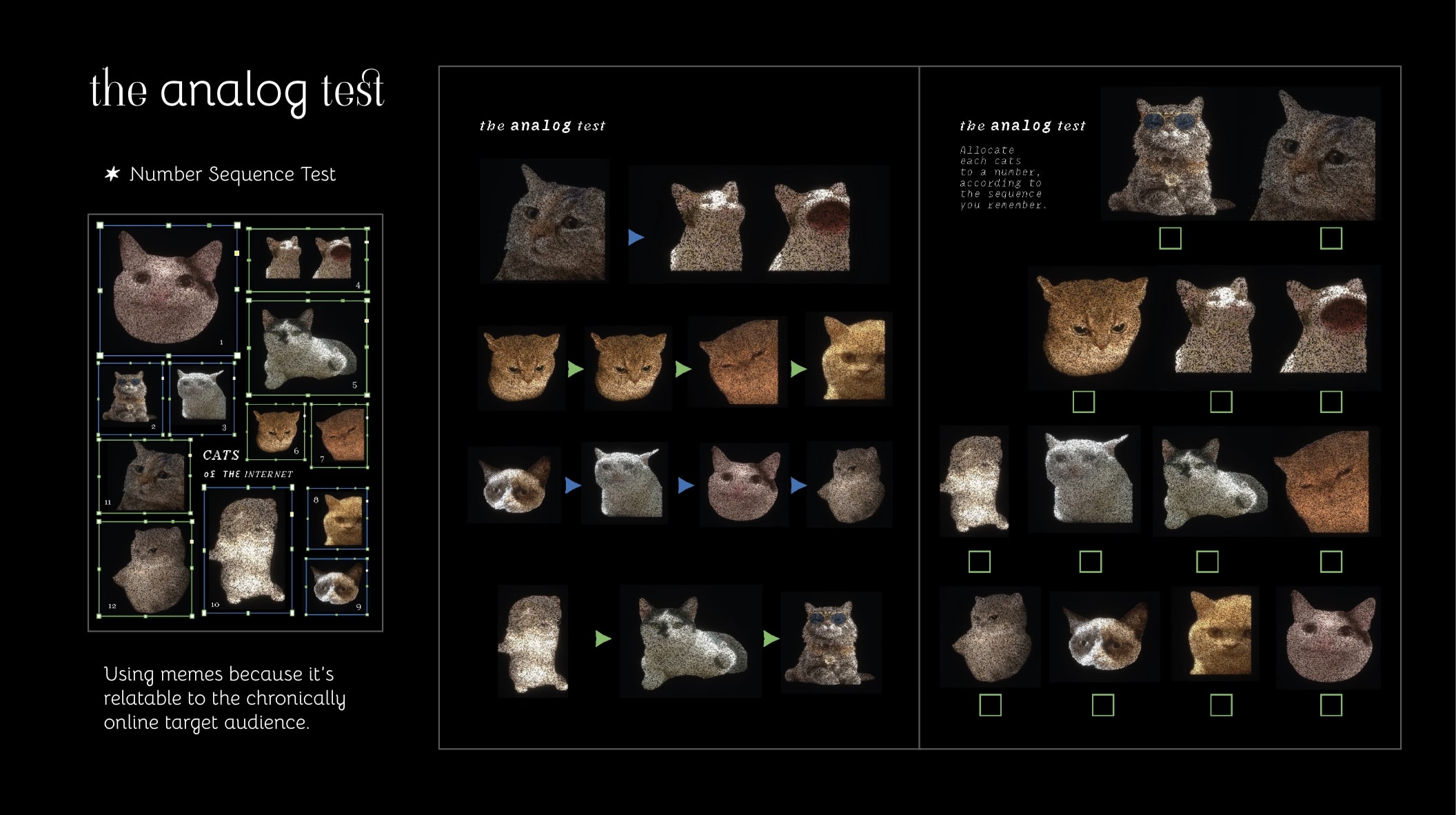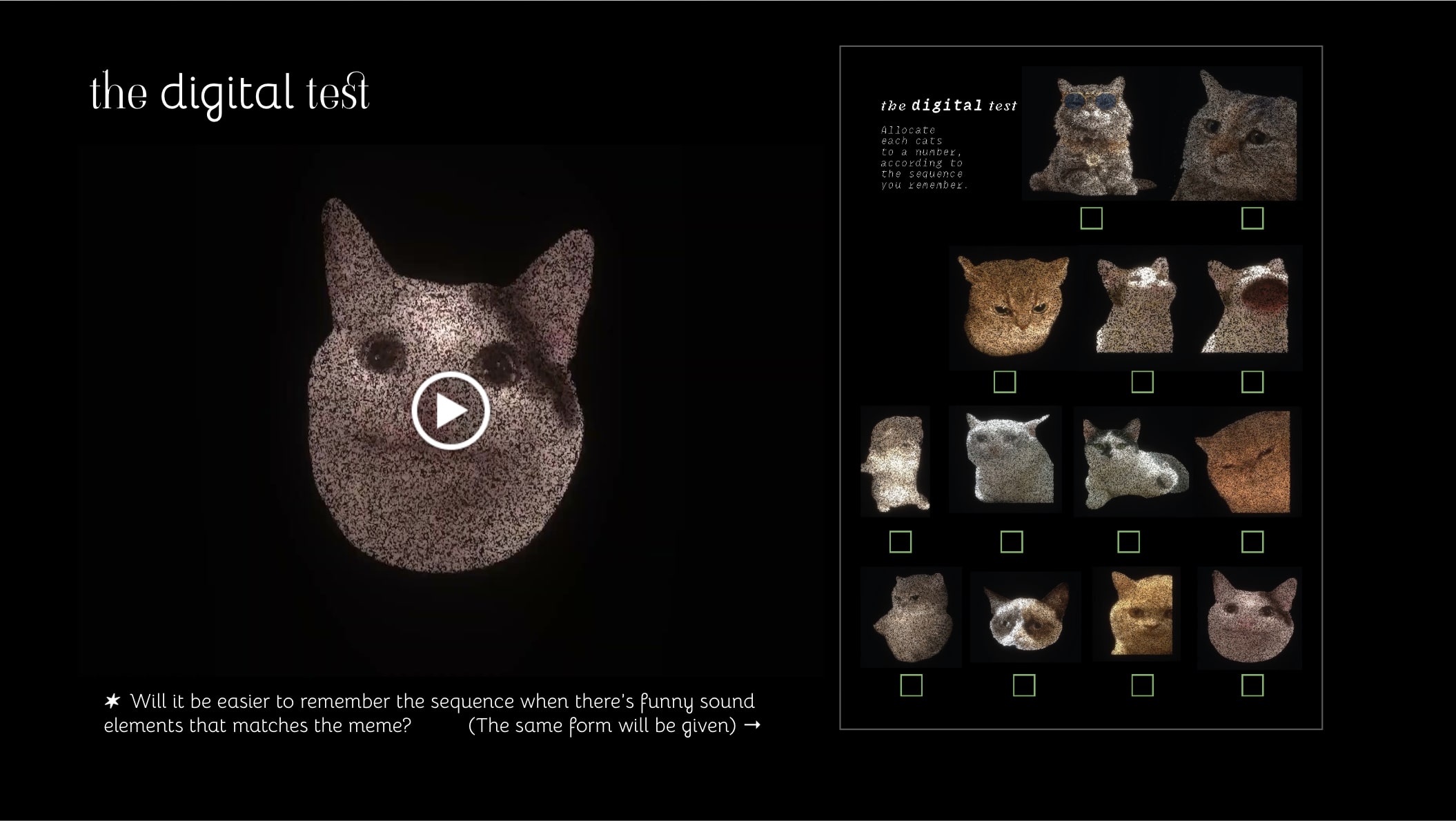ོ࿐˖✶⊹₊𖦹 W.2 ANALOG VS DIGITAL 𖦹₊⊹✶ ࣪˖࿐ོ
ANALOG VS DIGITAL
To create awareness on digital dementia
- ✶ Sequence
- ✶ Frequency
- ✶ Level of Detail
Digital dementia in the internet generation: excessive screen time during brain development will increase the risk of Alzheimer's disease and related dementias in adulthood.
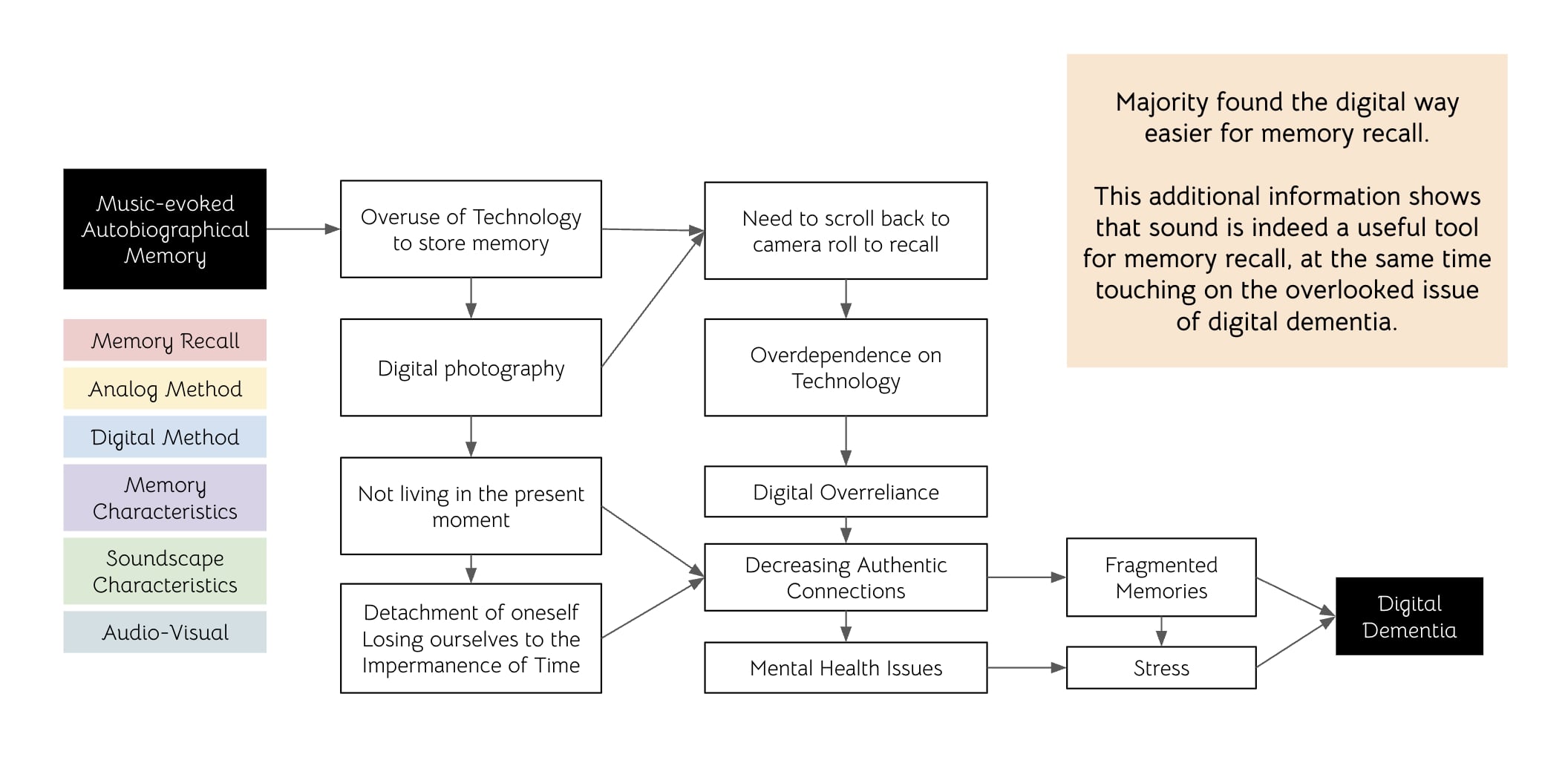
Types of Memory Tests
The purpose of doing memory tests on participants (audio-visual) and (non-digital) is to compare the results of the tests to see which one is more effective in helping participants remember things as well as to proves whether they have digital dementia or not.
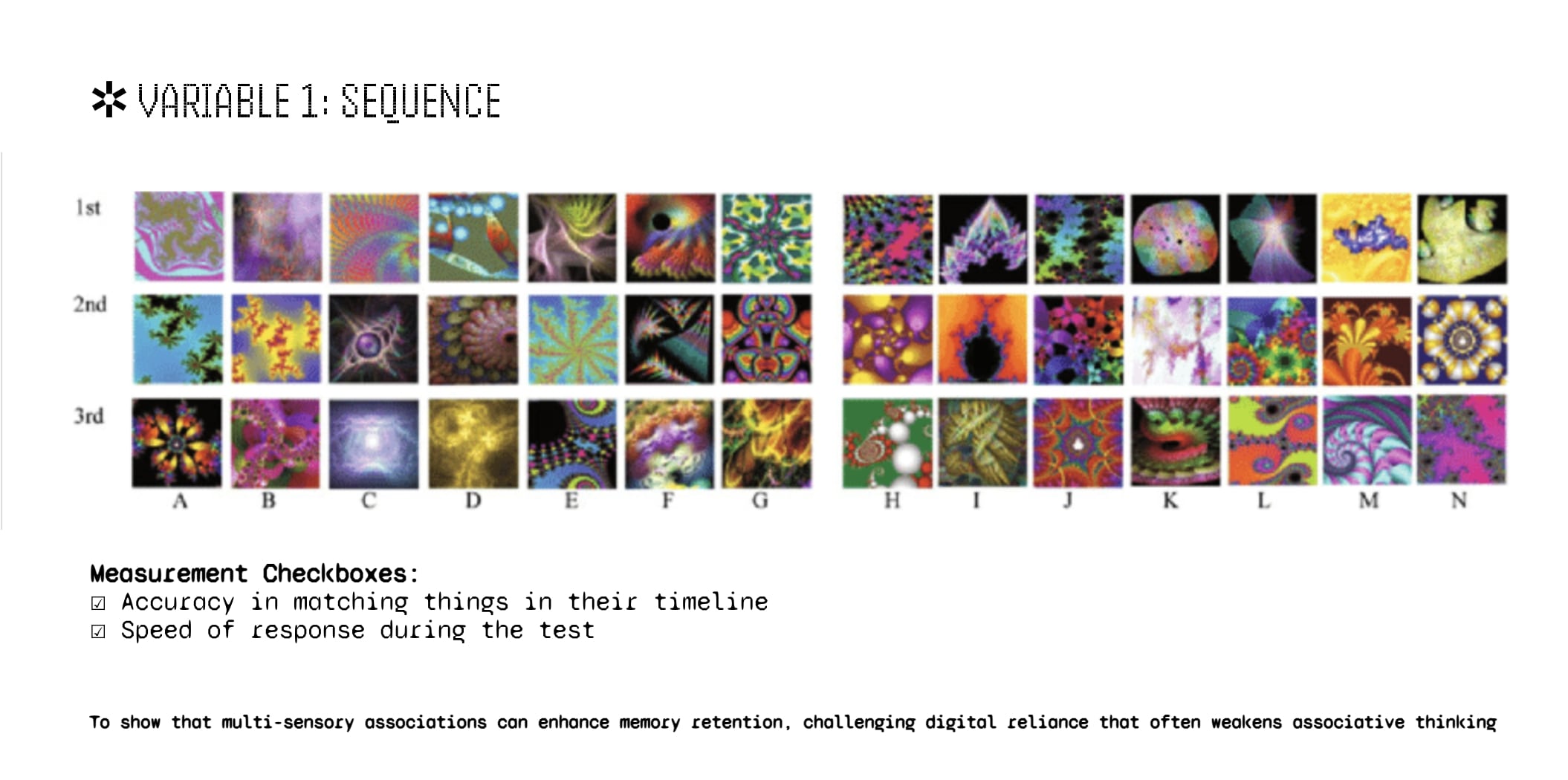
sequence test 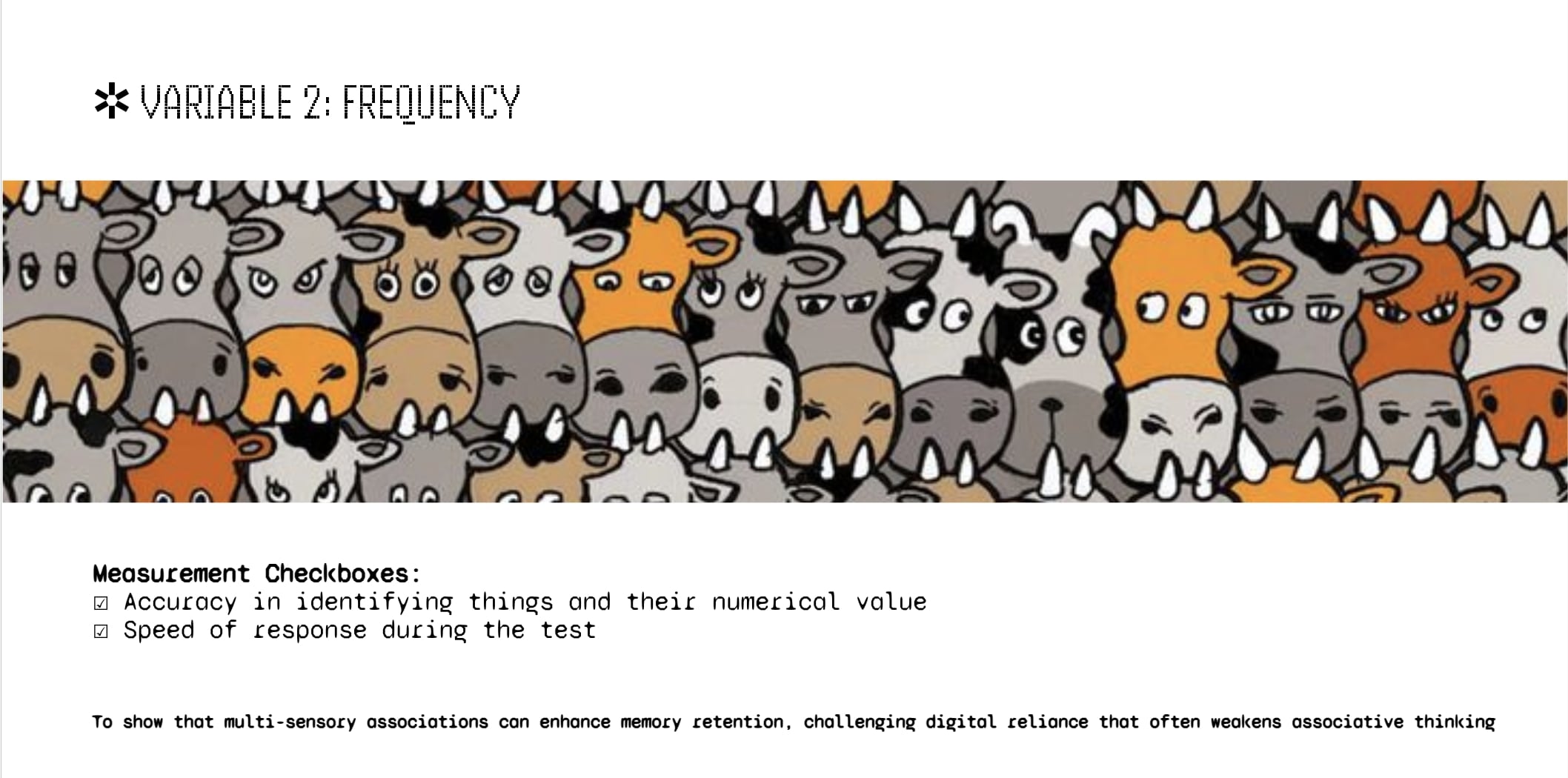
frequency test 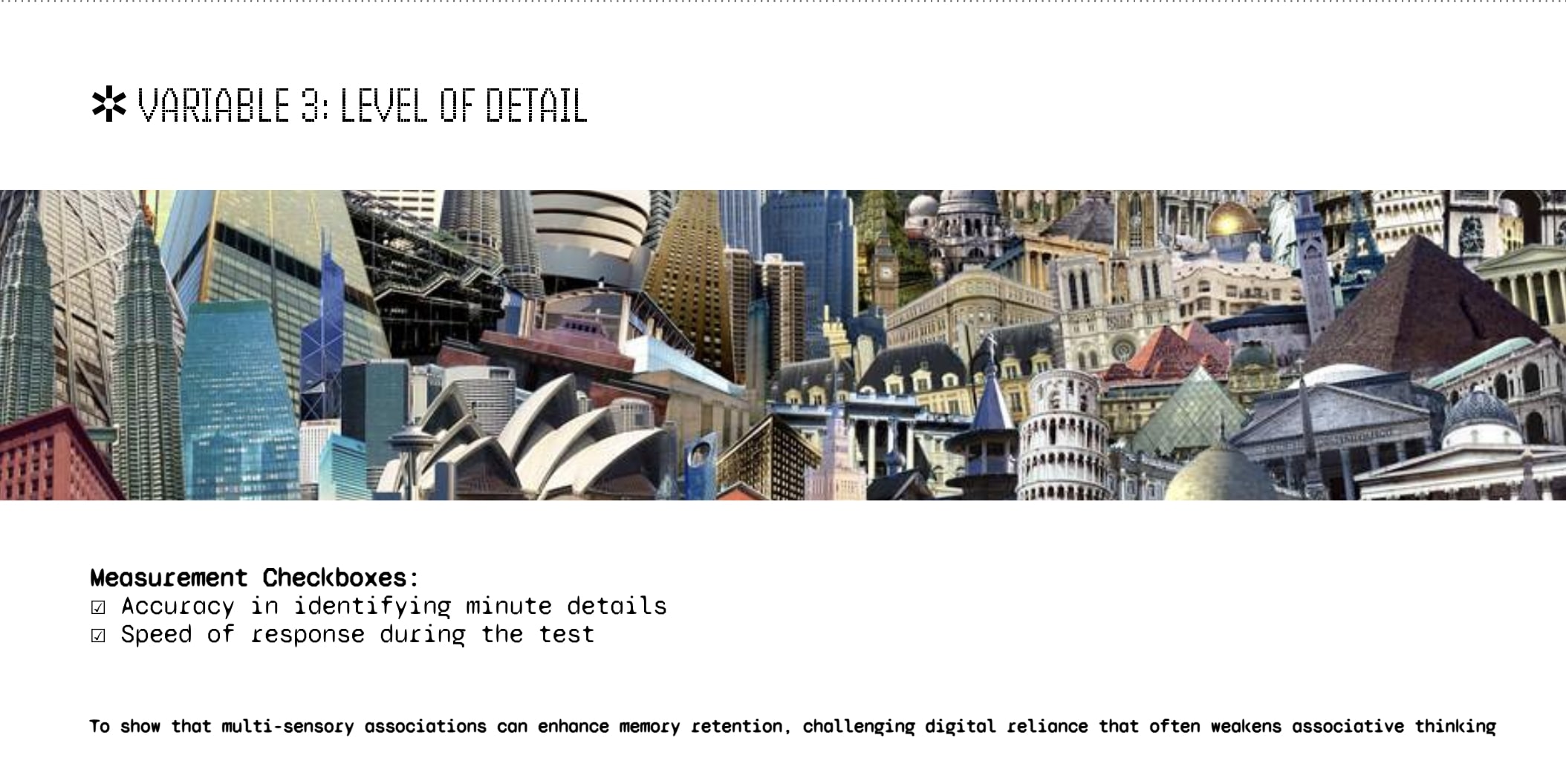
level of detail test
Digital Dementia Tests
AB user testings
It is a method used in user experience (UX) and marketing to compare two versions of a product or service, typically a website or app, to see which performs better based on specific metrics.
- ✶ Data-driven decisions
- ✶ Understand how users experience and interaction in reality
- ✶ Help identify elements that influences impact (eg. call-to-action, thinking perspective etc.)
- ✶ Continuous improvement and iterations to refine
- ✶ Relatively quick, easy and effective
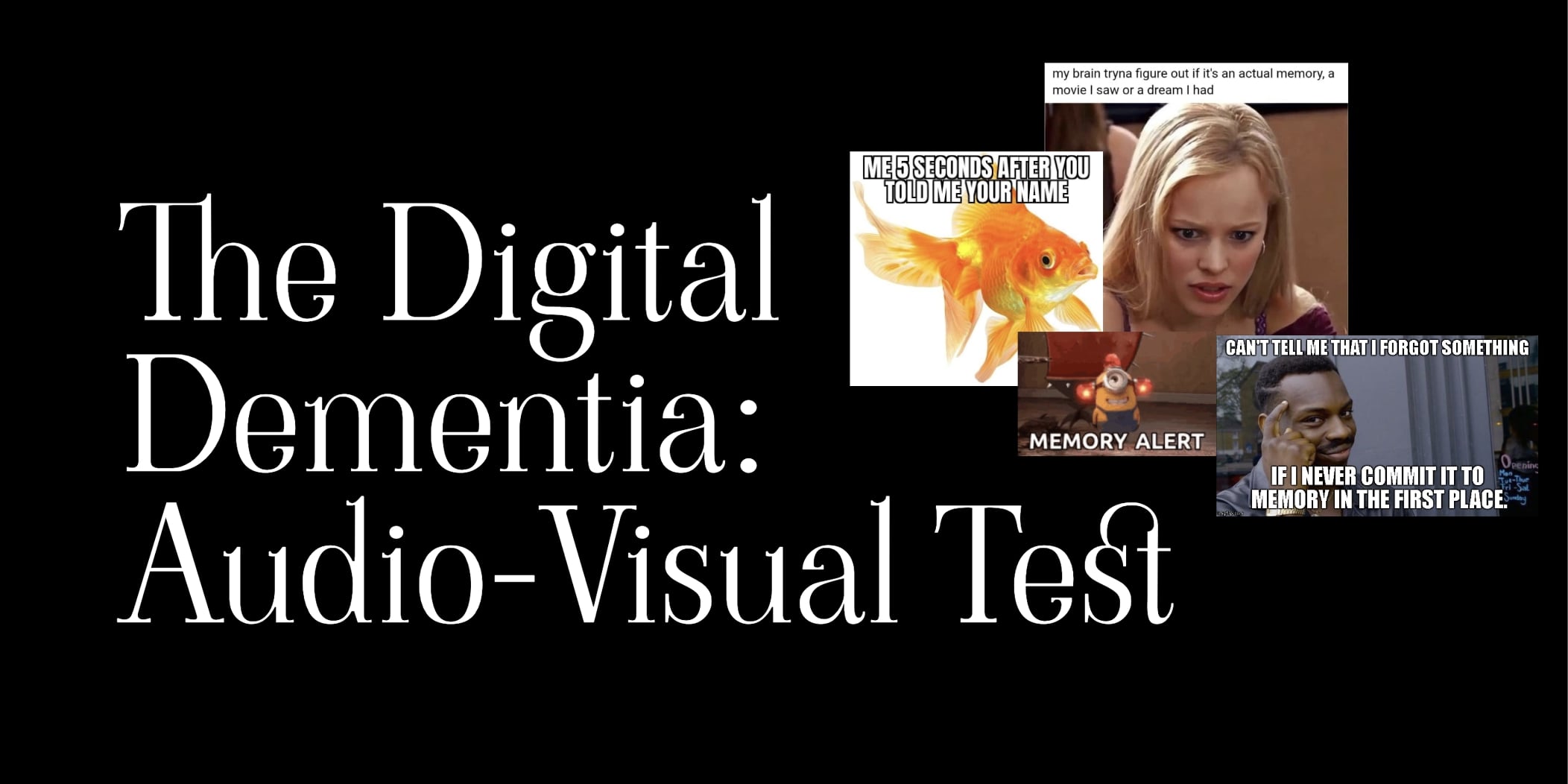
The Sequence Test
Featuring a series of different cats each with its own specific audio sound for the digital version while the analog version is the same thing but printed on a paper without audio sounds. The purpose of this test is to see whether participants perform better in the digital version or the analog version. Secondly, to see if the audio sounds in the digital version helps participants remember the sequence of the cats better than the analog version.
The Frequency Test
In both the video and analog tests, there will be a cat that will appear twice. The purpose of this test is to see if participants can remember the cat that appeared twice in the video. The digital version will have a cat that appears twice with different audio sounds while the analog version will have a cat that appears twice but without any audio sounds. However, the participants were not informed that there will also be a repeated cat in the video for the digital test, to see if they can remember the repeated cat without any hints.
In the end, it is to see if sound is a good memory trigger for participants to remember the sequence of the cats.
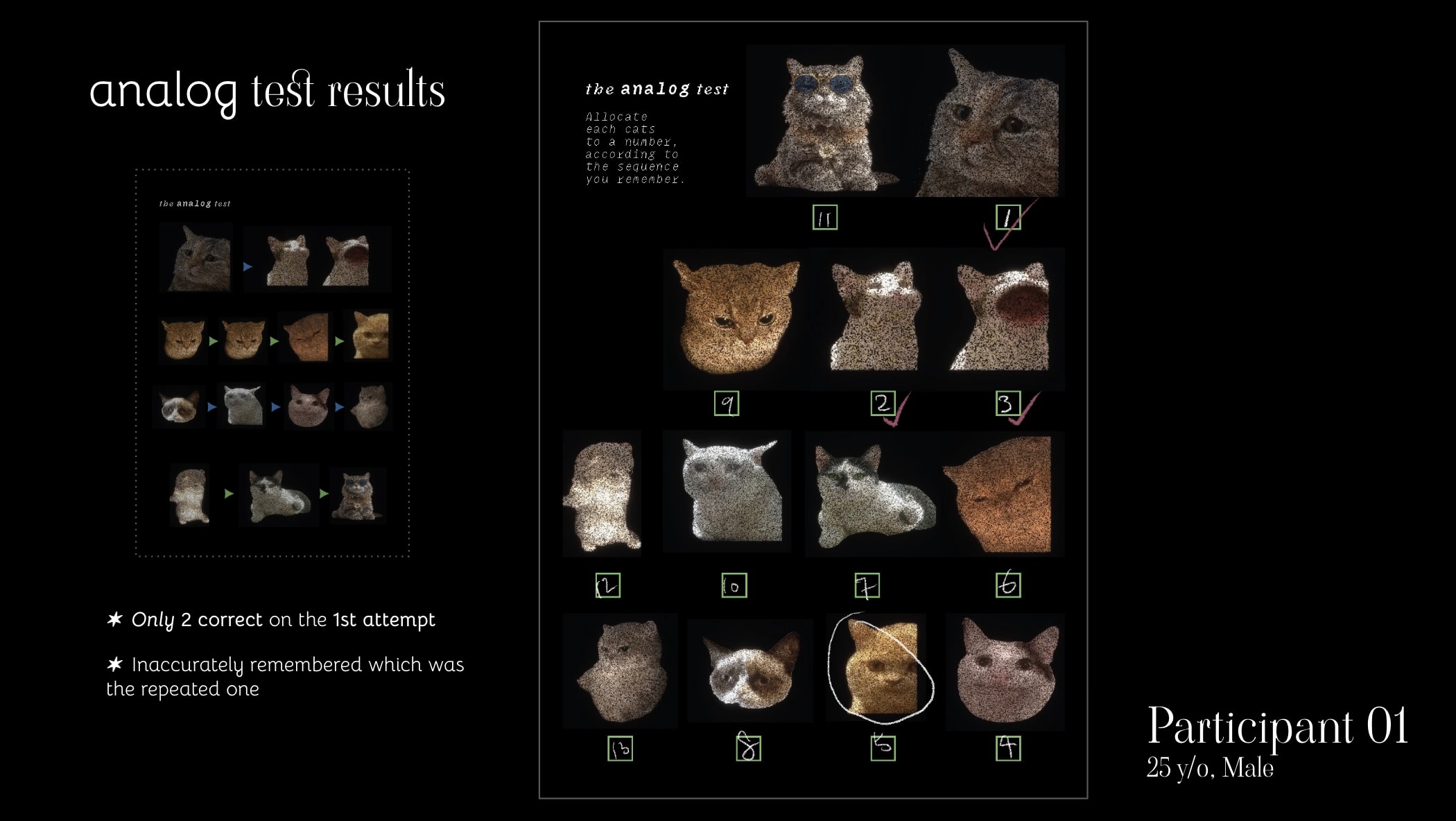
ANALOG TEST — Male, 25y/o, only 2 correct; however, inaccurately remembered which one was the repeated cat 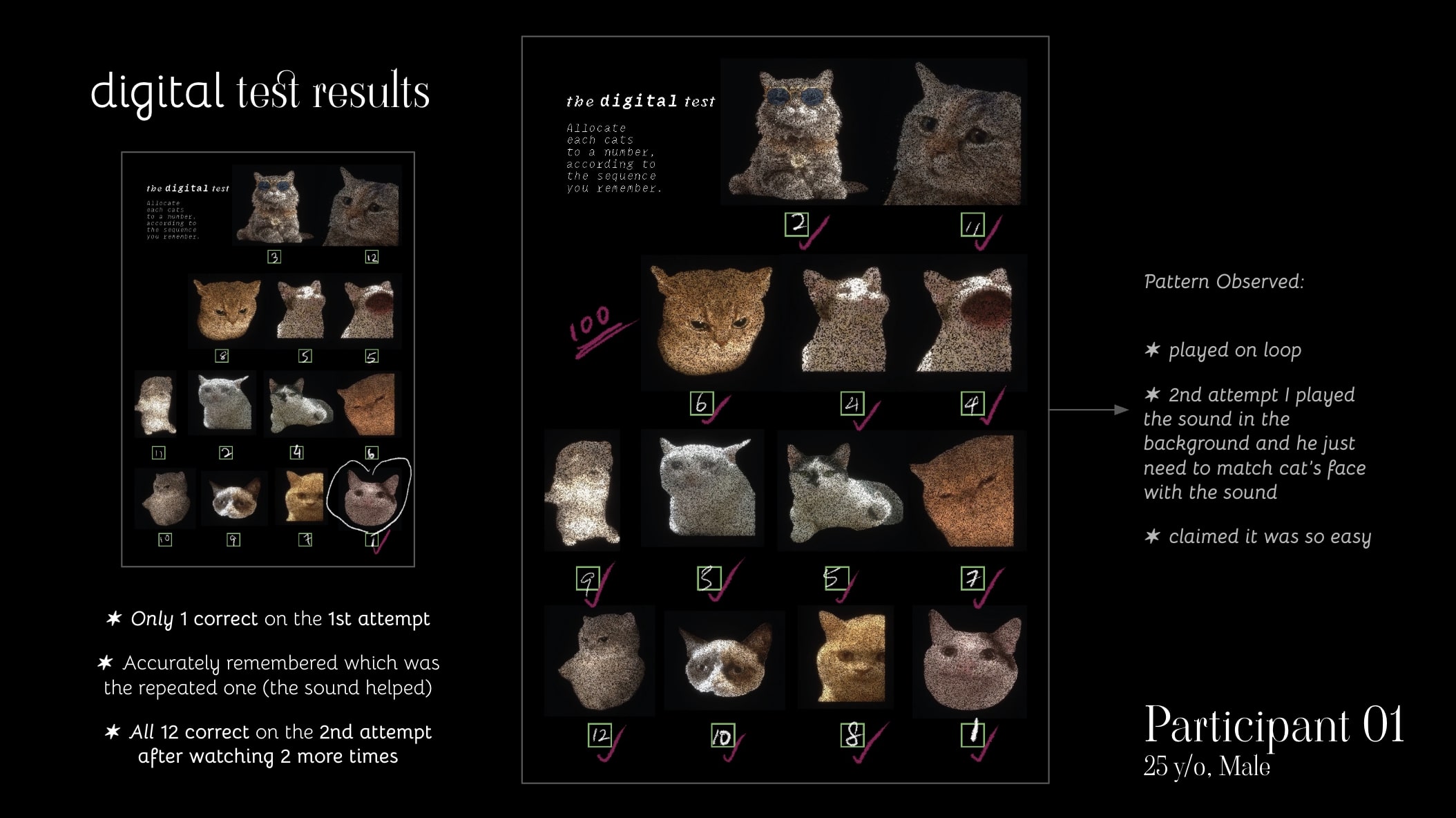
DIGITAL TEST — 1 correct, "remembers the repeated one because of the sound"; digital test 2nd attempt: All 13 correct
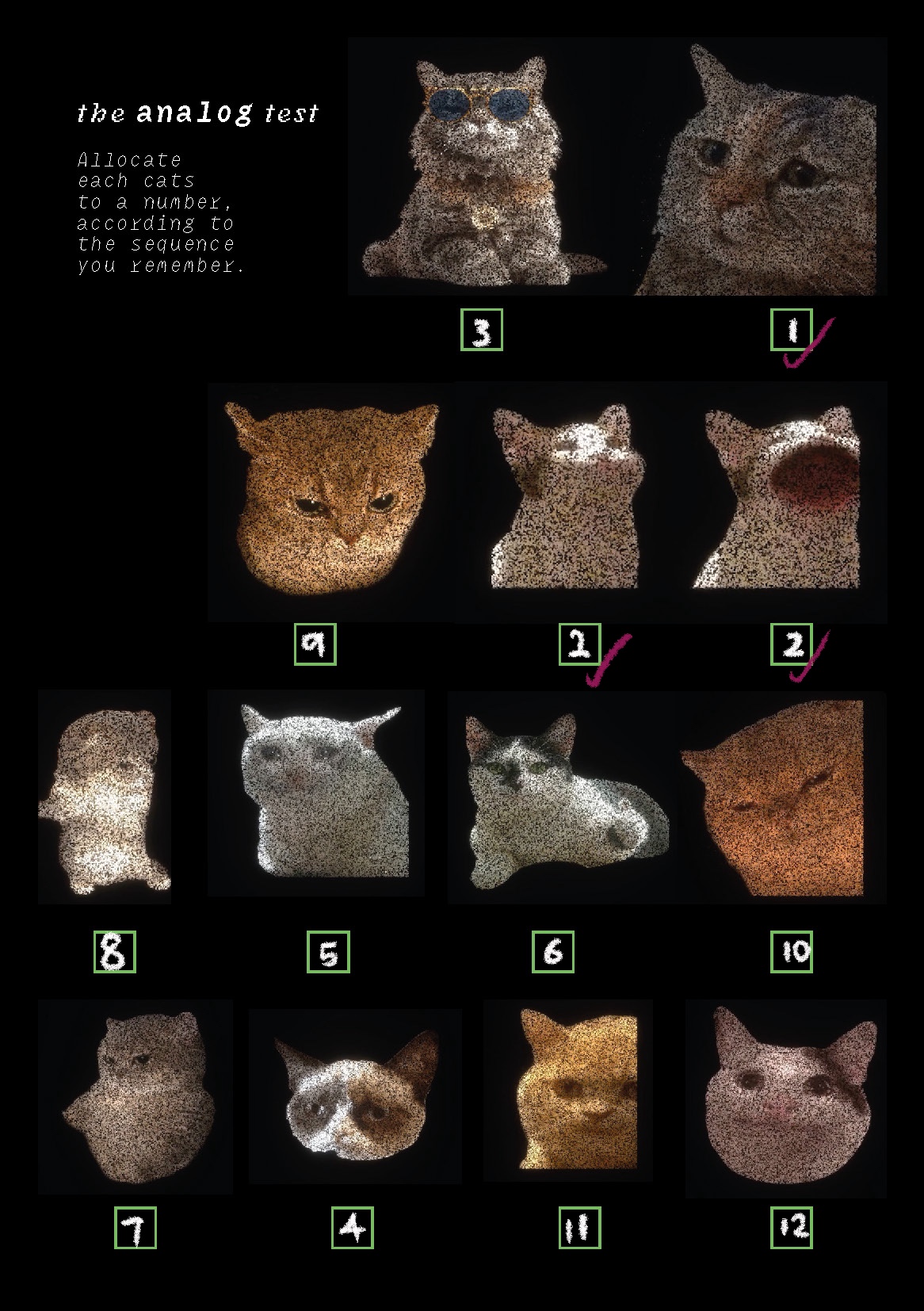
ANALOG TEST — Female, 55y/o, only 2 correct; accurately remembered which one was the repeated cat 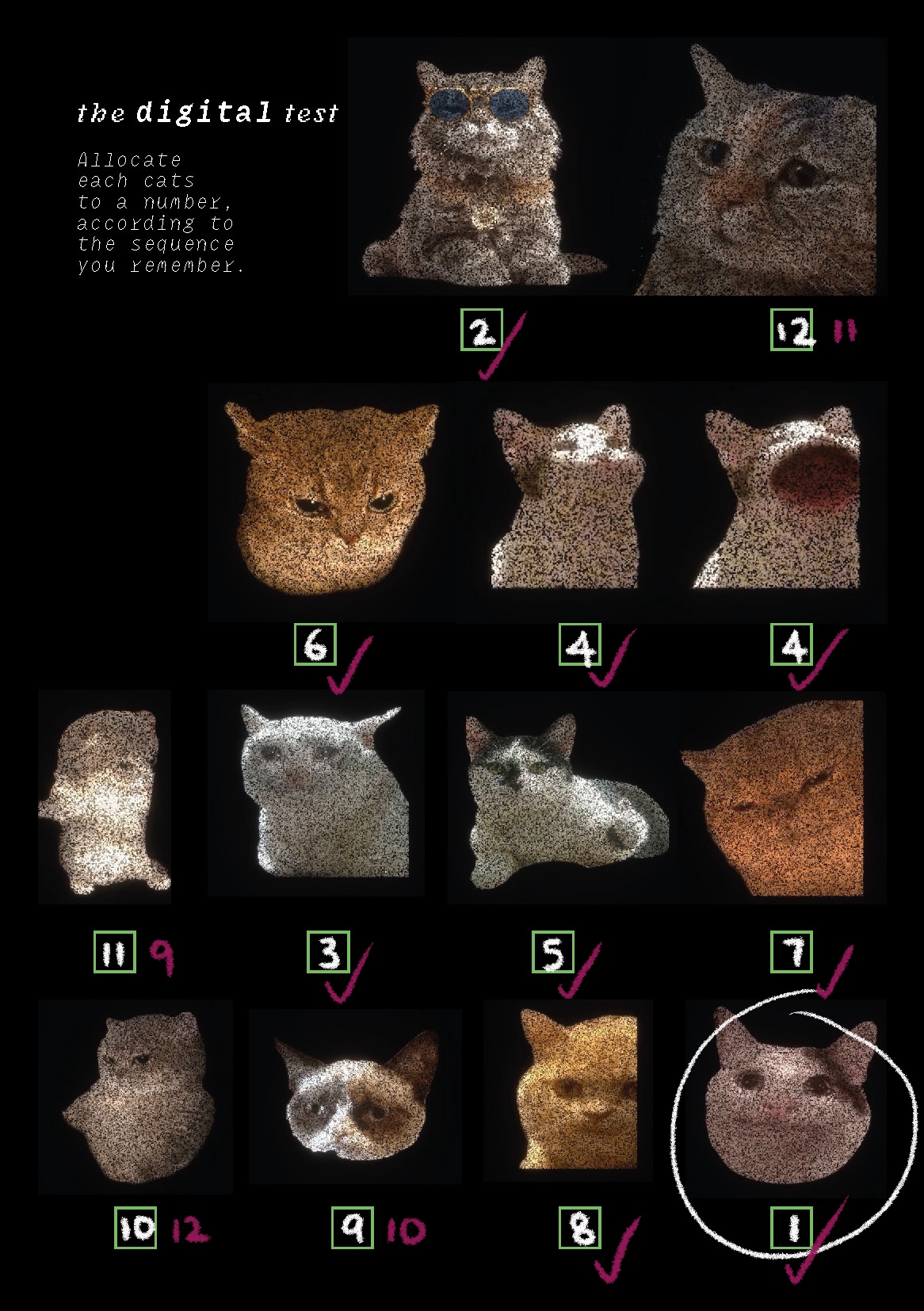
DIGITAL TEST — astounding result of 9 correct on 1st attempt; Accurately remembered the repeated: "the face really matches the sound and it’s the funniest"
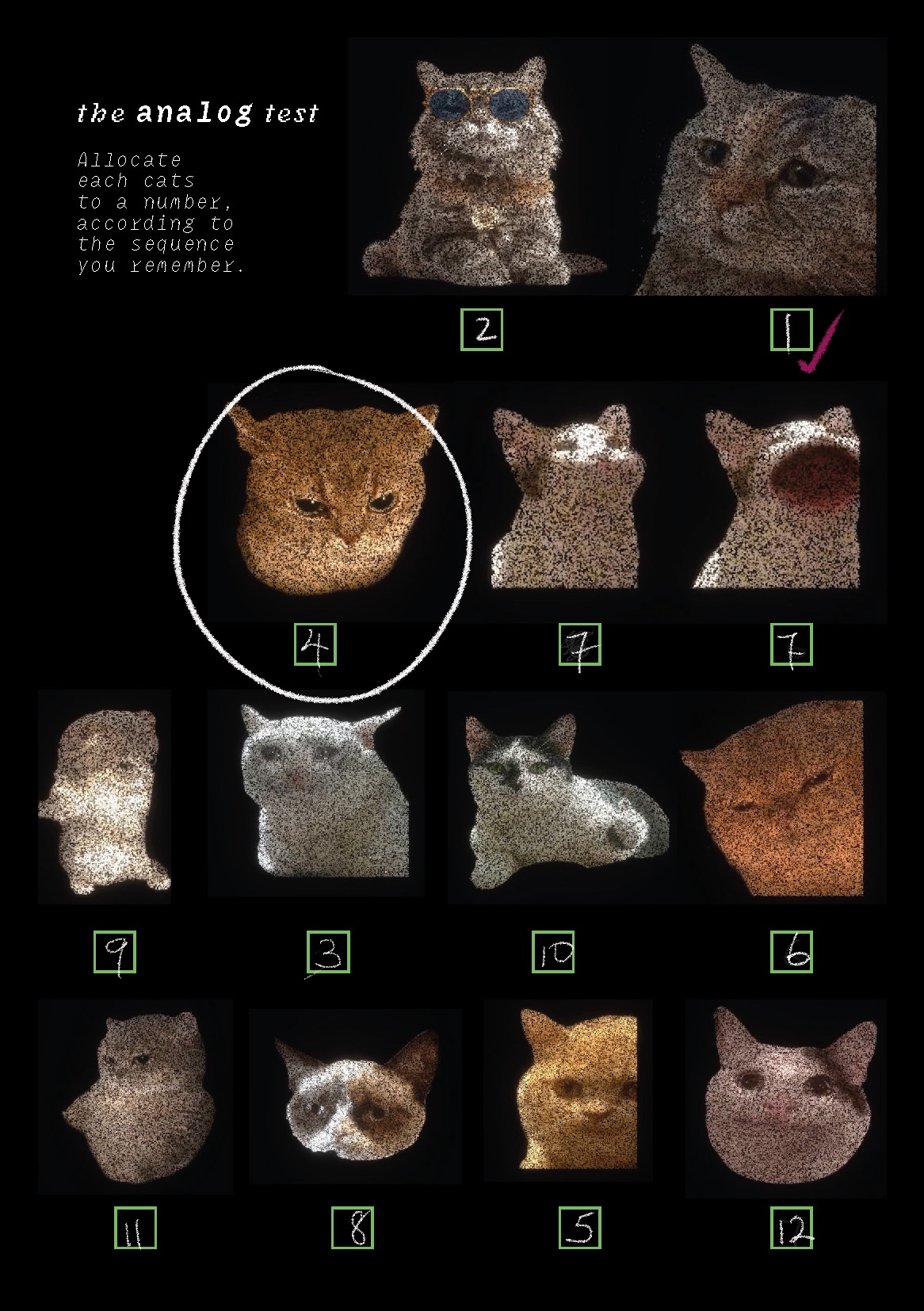
ANALOG TEST — Male, 62y/o, only 1 correct; surpisingly remembers the repeated cat accurately 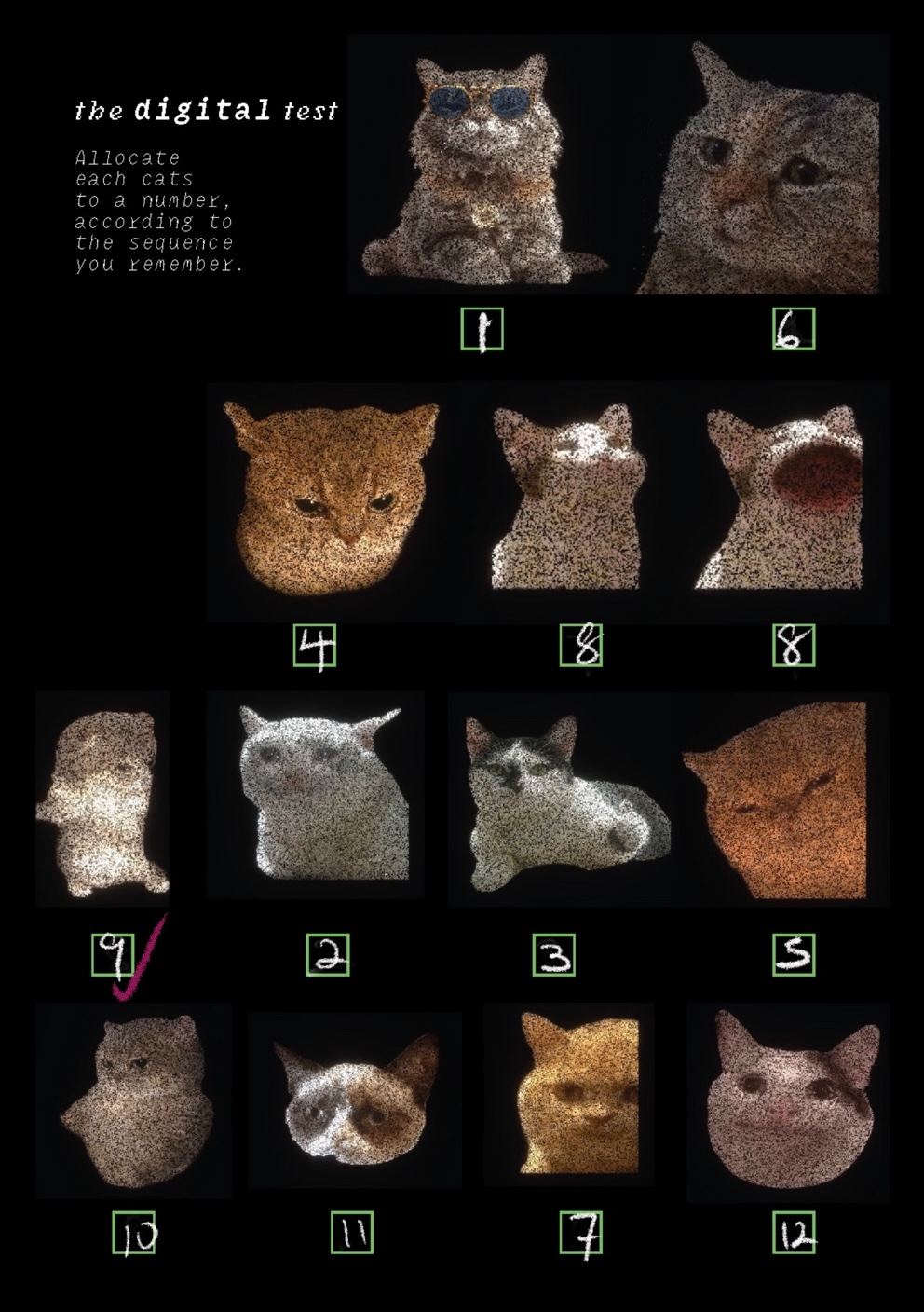
DIGITAL TEST 1st attempt — 1 correct; does not remember repeated cat 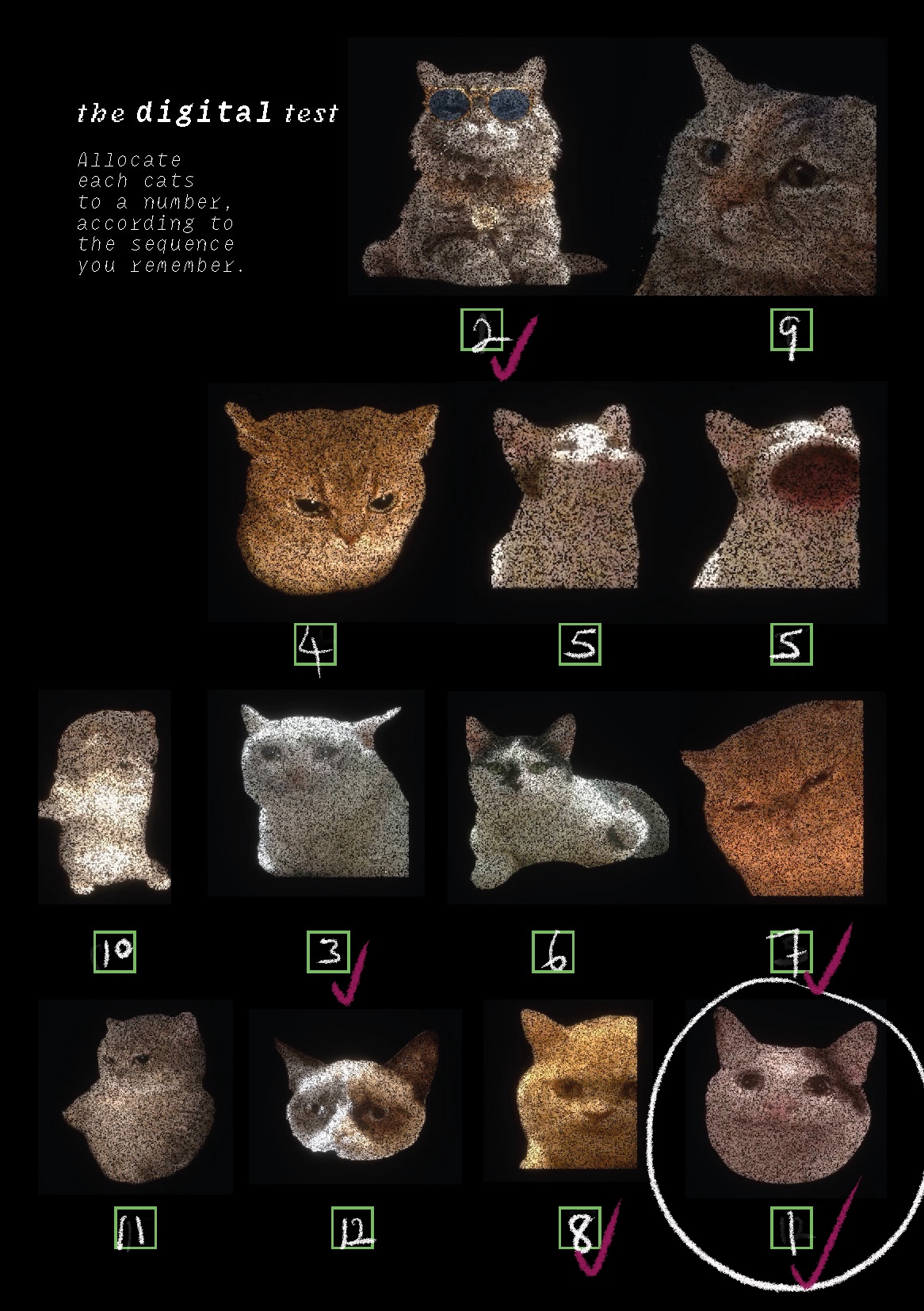
DIGITAL TEST 2nd attempt — 5 correct; remembered the repeated cat
This digital dementia test proves that participants did better in digital tests (audio-visual) than the analog tests (photographs only)
✶ Moving the focus back to how can i showcase the power of sound
